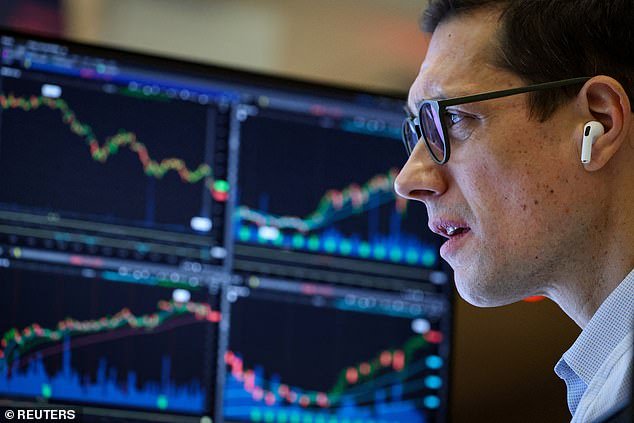Volatility has returned to Wall Street as concerns about bad loans have spooked investors.
The market was rattled on Thursday after two regional banks disclosed bad loans, causing a sell-off which eventually hit the wider market.
They sparked concern about poor lending practices and credit quality in the market, which many are already warning is overheated and set for a sharp correction.
There are fears the banking system is flashing the same red lights that once triggered a global meltdown.
Salt Lake City-based Zions Bancorporation on Thursday disclosed it would take a $50 million loss in the third quarter over alleged fraudulent loans, sending its stock plummeting 13 percent.
Phoenix-based Western Alliance Bancorp also disclosed loan fraud losses tied to the same investment funds, and saw its stock tank 11 percent.
On Thursday, the S&P 500 and the Dow Jones Industrial Index closed with sharp losses, as investors grew uneasy about whether the lenders’ problems were just a collection of one-offs or a signal of something larger threatening the industry.
The disclosures add to other recent loan blowups, including two major auto bankruptcies.

Volatility has returned to Wall Street as concerns about bad loans have spooked investors
Questions are now being asked about whether there are other bad loans, or if there has been too much lending to weak companies which could now upend both Wall Street and Main Street.
The 2008 financial crisis was primarily caused by the collapse of the US housing market, which was triggered by Americans defaulting on predatory subprime mortgages.
On Friday, the stock market seemed to steady, with the two banks at the center of Thursday’s action also rising to trim some of their losses.
All three indexes drifted between gains and losses through the morning, but the moves were not as jarring as the big hour-to-hour swings they had earlier in the week.
By early afternoon, the S&P 500 had gained 0.23 percent, while the Dow was up 0.31 percent and the tech-heavy Nasdaq had risen 0.19 percent.
Better-than-expected earnings from regional bank Fifth Third Bancorp also helped convince investors that credit concerns may not be serious.
‘While both events are reportedly fraud-related, we believe these credit issues are idiosyncratic and not indicative of a broader weakening of credit trends,’ Ulrike Hoffmann-Burchardi, global head of equities at UBS, said in a note.
But some are seeing these bad loans as examples of what JPMorgan CEO Jamie Dimon described as ‘cockroaches’ in the economy.

On Thursday, the S&P 500 and the Dow Jones Industrial Index closed with sharp losses

JPMorgan Chase CEO Jamie Dimon has warned about ‘cockroaches’ in the US economy

While toxic mortgages were at the heart of the 2008 financial crisis, subprime auto loans are raising warning signs today
Last month, subprime auto lender and dealer Tricolor, which provided loans to families with poor or no credit, went bust.
Borrowers at the lower end of the income spectrum tend to default first, and there are growing fears that other lenders targeting the same group could also collapse – echoing what happened with subprime home loans in 2008.
Americans are racking up a huge amount of debt to keep their cars, while a record amount cannot keep up with the payments.
Not long after Tricolor, auto-parts supplier First Brands also filed for bankruptcy amid an accounting scandal that has left lenders scrambling for more than $2 billion in missing funds.
‘My antenna goes up when things like that happen,’ Dimon told analysts during a call on Tuesday.
‘And I probably shouldn’t say this, but when you see one cockroach, there are probably more… Everyone should be forewarned on this.’
The soaring cost of cars and insurance is pushing millions of Americans to the financial brink – and Wall Street is worried it could spark the next recession.
Drivers owe $1.66 trillion in car loans – a bigger burden than federal student loan debt or credit cards, and up 20 percent since 2020.

